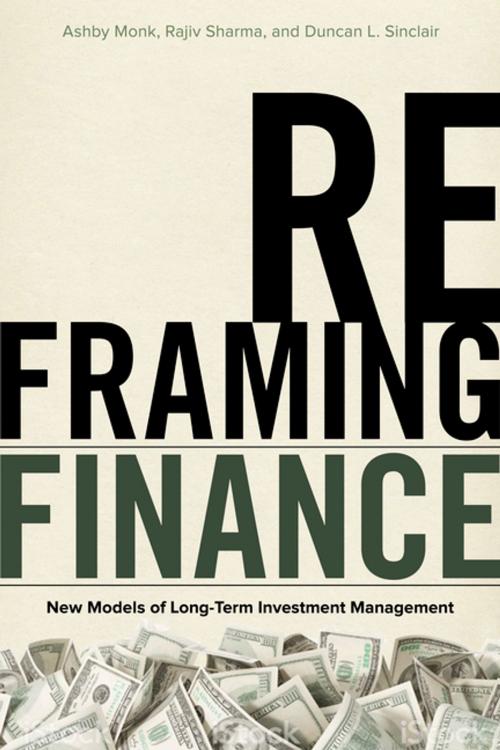Reframing Finance
New Models of Long-Term Investment Management
Business & Finance, Business Reference, Infrastructure, Government & Business, Finance & Investing, Finance| Author: | Ashby Monk, Rajiv Sharma, Duncan L. Sinclair | ISBN: | 9781503602755 |
| Publisher: | Stanford University Press | Publication: | August 8, 2017 |
| Imprint: | Stanford Economics and Finance | Language: | English |
| Author: | Ashby Monk, Rajiv Sharma, Duncan L. Sinclair |
| ISBN: | 9781503602755 |
| Publisher: | Stanford University Press |
| Publication: | August 8, 2017 |
| Imprint: | Stanford Economics and Finance |
| Language: | English |
Since the 2008 financial crisis, beneficiary organizations—like pension funds, sovereign wealth funds, endowments, and foundations—have been seeking ways to mitigate the risk of their investments and make better financial decisions. For them, Reframing Finance offers a path forward.
This book argues that institutional investors would better serve their long-term goals by putting money into large-scale, future-facing projects such as infrastructure, green energy, innovation in agriculture, and real estate development. At the same time, redirecting long-term investments would close significant financial gaps that government cannot. Drawing on key contributions in economic sociology, social network theory, and economics, the book conceptualizes a collaborative model of investment that is already becoming increasingly common: Large investors contribute more directly to private market assets, while financial intermediaries seek to foster co-investment partnerships, better aligning incentives for all. A combination of rich case studies and rigorous theory enables asset owners to move toward more efficient, private-market investing, while also laying groundwork for research at the frontier of finance.
Since the 2008 financial crisis, beneficiary organizations—like pension funds, sovereign wealth funds, endowments, and foundations—have been seeking ways to mitigate the risk of their investments and make better financial decisions. For them, Reframing Finance offers a path forward.
This book argues that institutional investors would better serve their long-term goals by putting money into large-scale, future-facing projects such as infrastructure, green energy, innovation in agriculture, and real estate development. At the same time, redirecting long-term investments would close significant financial gaps that government cannot. Drawing on key contributions in economic sociology, social network theory, and economics, the book conceptualizes a collaborative model of investment that is already becoming increasingly common: Large investors contribute more directly to private market assets, while financial intermediaries seek to foster co-investment partnerships, better aligning incentives for all. A combination of rich case studies and rigorous theory enables asset owners to move toward more efficient, private-market investing, while also laying groundwork for research at the frontier of finance.















